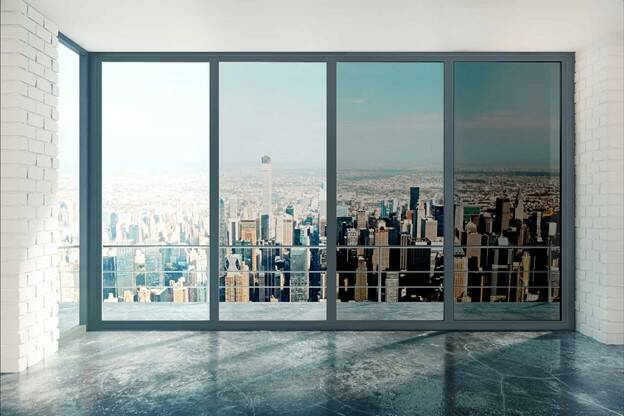
Smart Window Technology: Innovation and Future Potential
Smart window technology, a significant breakthrough in modern architecture and building design, incorporates advanced features that go beyond the traditional functionalities of windows. This technology encompasses various types, including electrochromic, thermochromic, photochromic, and liquid crystal windows, each with unique properties and applications.
Electrochromic windows, for instance, can change their light transmission properties with the application of electricity, offering control over heat and light entering a building. Other types, like thermochromic windows, respond to temperature changes, and photochromic windows react to light intensity, adjusting transparency accordingly.
How Does Smart Window Technology Work?
Electrochromic Technology
Electrochromic windows work by applying a low voltage electrical charge to a micro-thin layer of metal oxide, causing it to darken and reduce light transmission. Reversing the voltage causes the window to become transparent again. This process provides dynamic control over sunlight and glare without the need for curtains or blinds.
Thermochromic and Photochromic Systems
Thermochromic windows utilize materials that change their light transmission based on temperature, automatically tinting under direct sunlight and becoming clear in cooler conditions. Photochromic windows, similar to some eyeglasses, adjust their tint based on light intensity, offering a comfortable indoor environment irrespective of external weather conditions.
Applications of Smart Window Technology
Smart windows are increasingly being used in various sectors, including residential, commercial, and transportation. In commercial buildings, they contribute to energy efficiency by reducing the need for air conditioning and artificial lighting. In residential settings, they enhance comfort and privacy while also contributing to energy savings.
In the transportation sector, smart windows are being utilized in automobiles and aircraft to improve passenger comfort by controlling glare and heat. This technology is also being explored in the marine industry for similar purposes.
Moreover, smart windows find applications in innovative architectural designs, allowing for dynamic control of building aesthetics and environmental interaction.
Disadvantages of Smart Window Technology
Despite its many benefits, smart window technology does have some drawbacks. The initial cost of installation can be high, making it a significant investment. Additionally, the reliance on electronic systems means that these windows require a power source, which could be a limitation in certain applications or during power outages.
Long-term durability and maintenance are other concerns. The sophisticated technology embedded in smart windows may require specialized maintenance, and potential technical failures could lead to higher repair costs compared to traditional windows.

Potential Future Applications
The potential applications of smart window technology extend beyond current uses. In the future, they could be integrated with smart home systems, enabling automated control based on weather conditions, time of day, or even occupant preferences. This integration could lead to more personalized and energy-efficient living environments.
Another promising area is the integration of photovoltaic cells in smart windows, turning them into sources of renewable energy while maintaining their transparency and visual appeal. This could revolutionize building designs, making them more sustainable and energy-independent.
Is Smart Window Technology a Passing Trend or the Future?
Smart window technology is more than just a passing trend; it represents a significant step towards the future of building design and energy efficiency. As concerns about energy conservation and sustainable living continue to rise, the demand for innovative solutions like smart windows is likely to grow.
Advancements in materials science and IoT integration are set to further enhance the capabilities and applications of smart windows, making them an integral part of future smart buildings and homes. The continued research and development in this field suggest a bright and transformative future for smart window technology.
